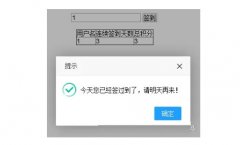PHP执行系统命令函数实例讲解
时间:2023-12-13PHP执行系统命令函数实例讲解
介绍
PHP提供了一些函数,可以在PHP脚本中调用系统命令并执行它们。这对于需要调用其他程序或操作系统功能的任务非常有用,例如在PHP脚本中调用命令行工具或运行系统命令等。
在此教程中,我们将学习如何使用PHP内置函数来执行系统命令。
exec函数
exec函数用于执行系统命令,并返回最后一行输出。下面是exec函数的语法:
exec(string $command, array &$output = NULL, int &$return_var = NULL) : string|false
其中:
$command: 要执行的系统命令。需要注意的是,由于安全原因,要避免使用可变的参数传递到该命令中,并避免程序注入(如使用escapeshellcmd或escapeshellarg函数进行处理)。$output: 用于存储输出的数组。$return_var: 用于存储命令的返回值。
下面是一个示例,演示如何在PHP脚本中执行命令并打印输出:
<?php
$output = array();
$return_var = 0;
exec('ls -la', $output, $return_var);
echo "Output:\n";
echo implode("\n", $output) . "\n";
echo "Return value: " . $return_var . "\n";
?>
在上面的代码中,我们传递了一个命令ls -la给exec函数,并将输出存储在$output数组中。由于该命令是列出当前目录下的所有文件和子目录的列表,因此,我们使用implode函数将数组中的元素用换行符连接在一起,以便打印整个输出。
shell_exec函数
shell_exec函数与exec函数功能类似,也用于执行系统命令。但是,与exec函数不同的是,shell_exec函数在执行命令时不会返回非零的返回值,也不可以读取输出并将其分解为多行。下面是shell_exec函数的语法:
shell_exec(string $command) : string|NULL
其中:
$command: 要执行的系统命令。
下面是一个示例,演示如何在PHP脚本中使用shell_exec获取当前系统的内核版本:
<?php
$kernel_version = shell_exec('uname -r');
echo "Kernel version: " . $kernel_version . "\n";
?>
在上面的代码中,我们使用了uname -r命令来获取当前系统的内核版本,并且将其存储在$kernel_version变量中,并打印输出。
结论
在本教程中,我们学习了如何使用exec和shell_exec函数在PHP脚本中执行系统命令。这些函数非常有用并且可以执行各种操作系统中的命令行命令。但是,由于安全原因,我们需要避免使用可变的参数传递到该命令中,并避免程序注入,可以使用escapeshellcmd或escapeshellarg函数进行处理。
 PHP+ajax+mysql+layui实现每日签到及提醒功能这篇文章主要为大家详细介绍了使用 PHP + layui 实现每日 签到 及提醒功能,具有一定的参考价值,感兴趣的小伙伴们可以参考一下,首次签到获得1个积分,第二次签到获得2个积
PHP+ajax+mysql+layui实现每日签到及提醒功能这篇文章主要为大家详细介绍了使用 PHP + layui 实现每日 签到 及提醒功能,具有一定的参考价值,感兴趣的小伙伴们可以参考一下,首次签到获得1个积分,第二次签到获得2个积